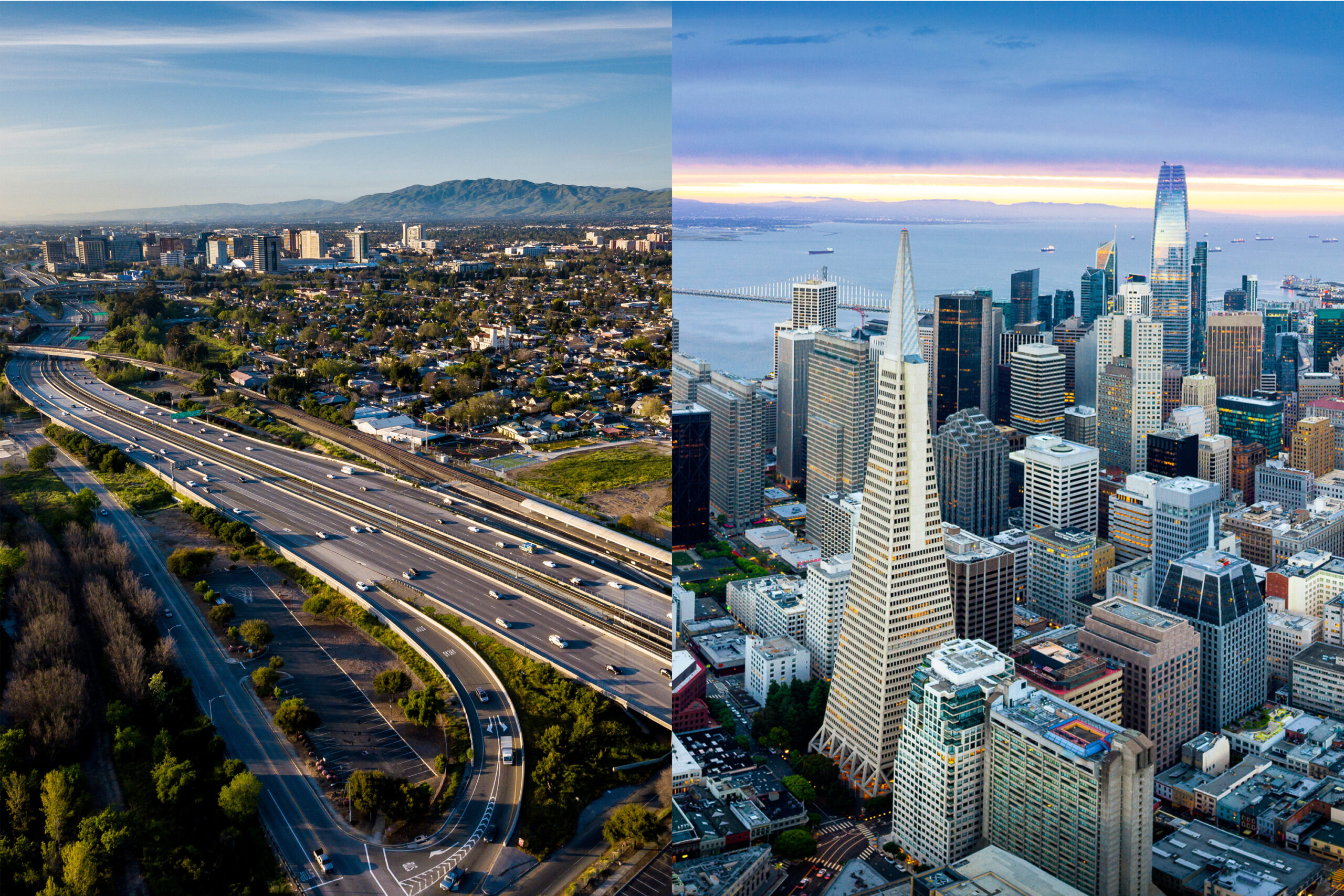When Khanh Chung steps out of his barbershop, he wants to see dozens of San Jose workers and residents bustling down First Street, but instead it’s a ghost town.
That’s not how he envisioned it when he opened Concept in January 2022. The pandemic was waning and people were returning to work and normalcy. But his visions outpaced reality, and in his 18 months in business, he has seen many of his neighbors, like Pizza Flora and Original Gravity, close.
“I was hoping for cool businesses to stay open around me, something that will give people a reason to just walk around and browse a little bit,” Chung told San Jose Spotlight. “But clientele has been a little slower than I thought. People are still working from home and there are a lot of empty shops.”
San Jose, the Bay Area’s largest city—both in square miles and population—continues to battle homelessness, high housing costs, commercial vacancies and crime.
Despite efforts by city, county and state governments, the homelessness crisis in Santa Clara County persists, with roughly 10,000 people lacking permanent housing in 2022. About 77% of those people are unsheltered, meaning they live outdoors, on the street or in vehicles, according to Destination: Home. Many live along the creeks and rivers—including the Guadalupe River—which crisscross the city.
That crisis is driven, in part, by high housing costs. The city is the toughest place to buy a home with the worst price-to-rent ratio, according to an analysis by real estate data company Clever.
In San Jose, it’s far cheaper to rent than to buy—but that doesn’t mean renting is a cakewalk. The report calculated the South Bay city’s home price-to-rent ratio by dividing the median home price by the median annual rent. A ratio of 21 or more means it’s better to rent than to buy. San Jose ranked dead last with a score of 38.
Commercial vacancies are also troubling the “Capital of Silicon Valley.” In downtown, there are more than 73 empty storefronts, according to the San Jose Downtown Association.
When it comes to violent crimes, like homicide or aggravated assault, both San Francisco and San Jose report similar numbers, according to a recent analysis by The Standard.
Chung said even when one restaurant or bar closes, soon after he can sense a major change in the foot traffic. That is why he’s hopeful the energy will shift upward after new restaurants open up nearby.
“I’m still holding on because I see that downtown has a lot of potential,” Chung said. “More people need to see it, though.”
Nate Donato-Weinstein, the city’s downtown manager, said the number of vacant storefronts fluctuates all the time, but the trend is looking up. Since the pandemic, 2,000 new apartments have been put on the market, about 40% of the workforce is back in the office and downtown has more planned events this year than in 2022. There is more foot traffic, and downtown is already showing measurable improvement, he said.
“We are already seeing that in some key hubs like the Fountain Alley area,” Donato-Weinstein told San Jose Spotlight. “The Paseo will see a lot more activation with the Urban Catalyst Paseo project coming online, which already announced leases with Urban Putt, Eos & Nyx and Unofficial Logging. Miro’s ground floor space is under construction with Rollati Ristorante.”
But it still takes a year to several years to fill a vacant storefront. Nora Gonzalez, whose family has owned and operated Acapulco Jewelers for the last 45 years, said the store across from her has been vacant for at least four years. She said Post Street used to be filled with retail shops and that brought people downtown. Now it’s just nightclubs and bar scenes.
“We used to have shops for suits, baby clothes, anything you could want,” Gonzalez told San Jose Spotlight. “So we would have families walking around. But we haven’t had that in a long time. No one walks down here during the day.”
Alex Stettinski, CEO of the San Jose Downtown Association, said most of the vacant storefronts are retail because those are the hardest to attract new tenants. Vacant storefronts zoned for restaurants and bars fill up quicker.
“Our downtown by nature is more of an entertainment area,” Stettinski told San Jose Spotlight. “So I see more restaurants, more unique dining options, bars and unique lounges coming first. Retail will be sprinkled probably a little later.”
Donato-Weinstein said he doesn’t expect retail to come back until crime and homelessness are addressed, as only then will the perception of the area change. So the city is focusing on cleaning up blight. At the mayor’s direction, the city has increased police patrols and has budgeted for six additional downtown officers. San Jose is addressing empty or blighted storefronts via the Storefront Activation Grants program. Chung was one of the recipients to receive $10,000 for larger signage above his barbershop.
READ MORE: Video: This Unassuming San Jose Taco Truck Serves One of California’s Hardest-to-Find Tacos
This summer, the downtown association is partnering with the city to host pop-up shops in vacant spaces around downtown. It’s also exploring the installation of lighted artwork in vacant storefronts closer to September, Stettinski said.
“There are so many different forces that are working on helping downtown get back on track. […] It’s just a matter of time,” Stettinski said. “But it takes years. It’s a long process and we are just in the beginning of it.”
Portions of this story originally appeared in reports from San Jose Spotlight by Jana Kadah and Lorraine Gabbert.
